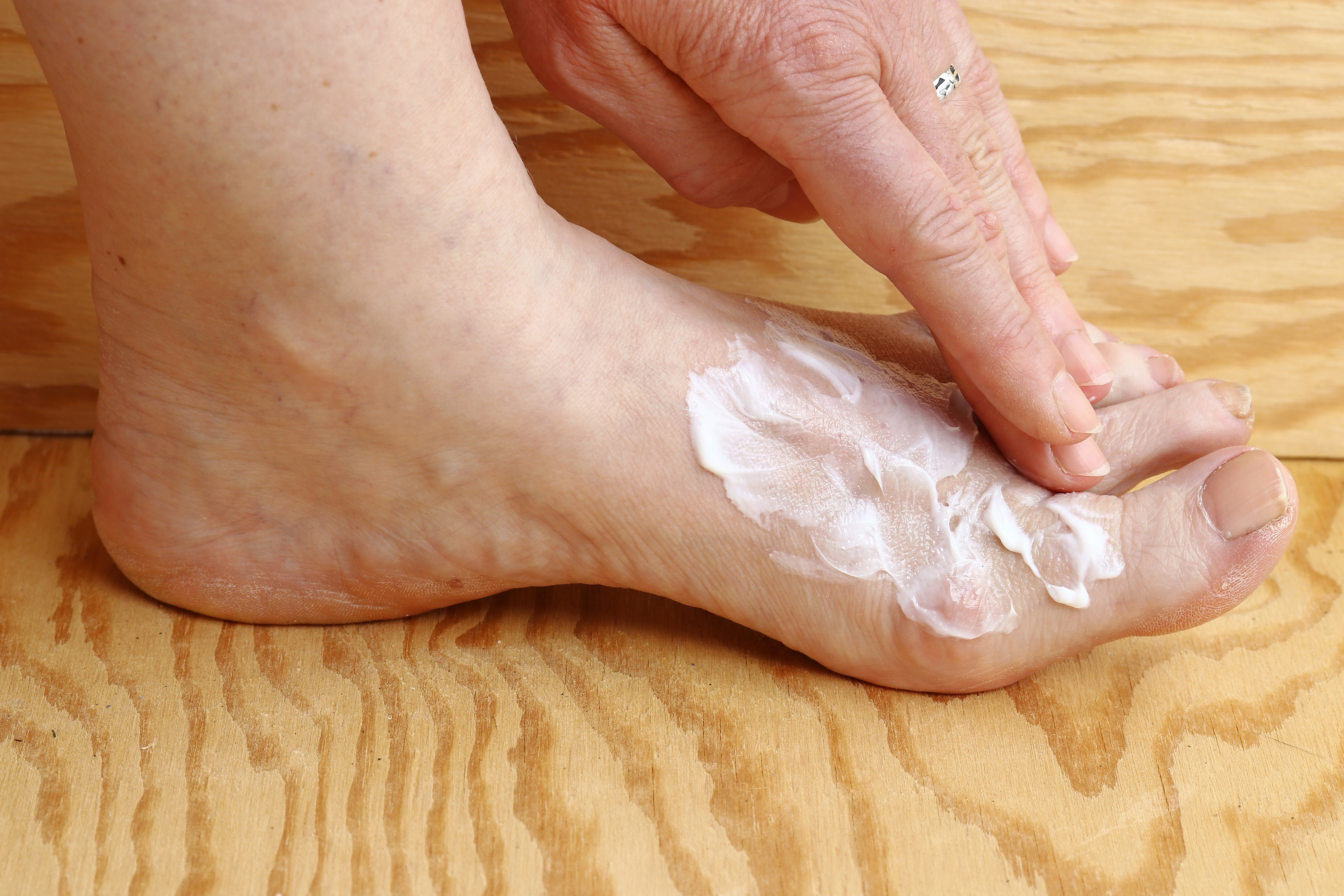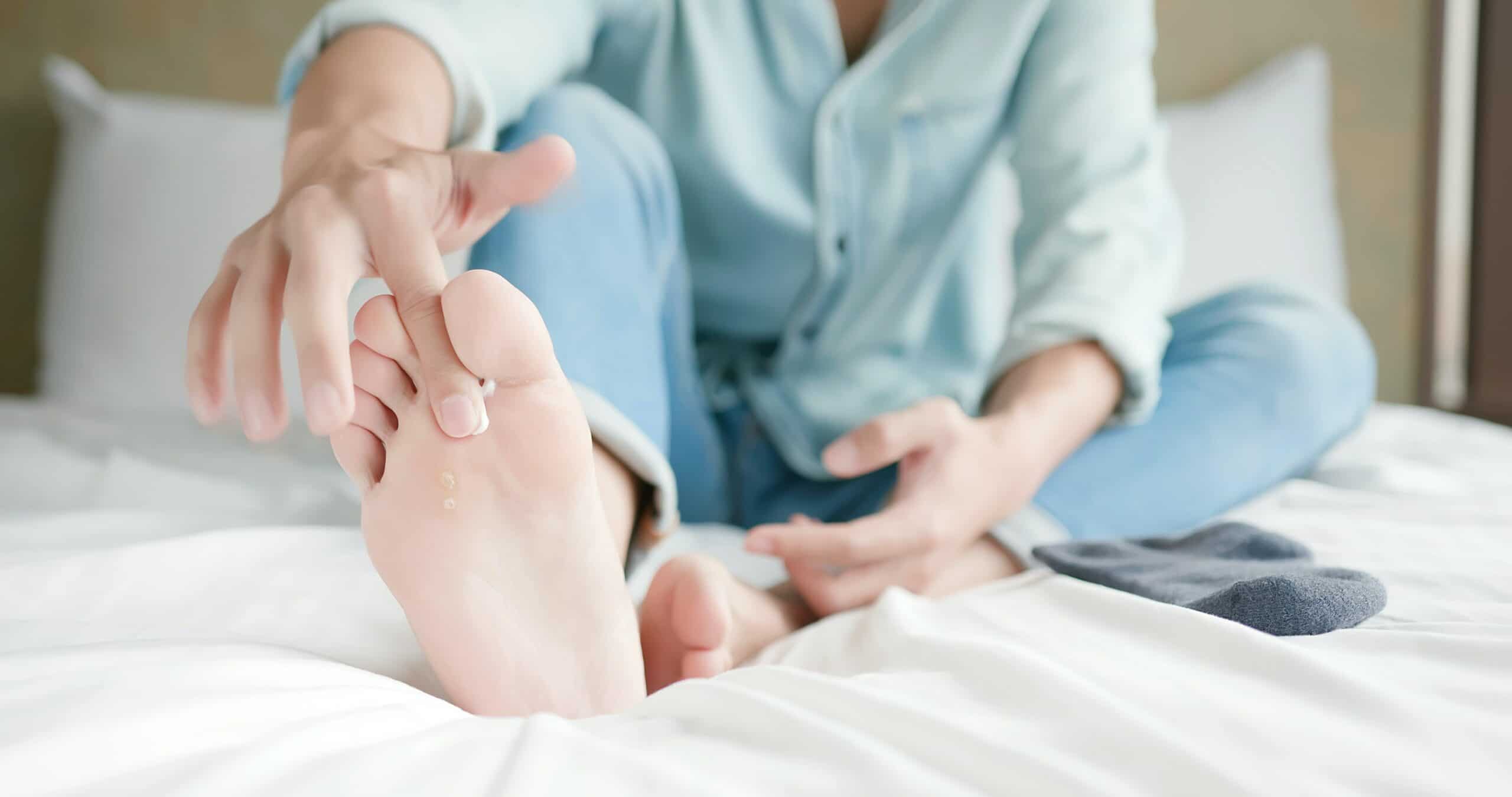Does your teenager keep getting athlete’s foot? Want to know what to do about recurring woes, or how to prevent fungal infections?
We asked Emma McConnachie, podiatrist and vice-president of the College of Podiatry for some expert advice on all things athlete’s foot…
What is athlete’s foot exactly?

“Athlete’s foot (or as it is also known, ‘tinea pedis’) is a very contagious fungal infection that is picked up by coming into contact with infected tissue (like skin),” says McConnachie.
“Athlete’s foot isn’t easy to spot, as the symptoms are not always consistent and can look quite different.
Your feet could be itchy, with little bubbles of fluid, or with red pin pricking in the skin. Or alternatively, it could look like very dry and flaky skin – on just one or both feet. All of these symptoms are usually seen in the arch of the foot or around the toes.
“Large, painful cracks can also develop, and the condition can spread to all toes or even the soles of the feet if left untreated. After several months, athlete’s foot can spread into the toenails and cause permanent damage, so it’s always best to seek treatment as quickly as possible.”
Are some people more likely to get athlete’s foot?
“Not everyone who comes into contact with the infection will get it, but those with moist, sweaty feet, or very dry feet with breaks in the skin, are most likely to develop it. In fact, it’s called athlete’s foot as people wearing sweaty trainers all day are also at a higher risk of getting infected!
“Another very common way to develop athlete’s foot is by walking barefoot in places that other people do, such as communal showers and changing rooms. Athlete’s foot can also be passed on through contact with others, however, people who sweat more are at increased risk.”
How can you prevent athlete’s foot coming back?
“To help prevent fungal infections, you can follow these top tips: Regularly change up which shoes you wear, to give them time to dry out properly, or at least ventilate or dry your shoes.
“Always dry between your toes after bathing and avoid applying creams in between your toes. It’s easy for it to get too moist in there and for the skin to crack, which increases your risk of infection. However, do moisturise your feet regularly, especially the heels, as they can easily split from being too dry.
“Avoid walking barefoot in communal areas. Flip-flops and pool shoes are easily available and the old-fashioned white ‘verruca sock’ has also had a modern makeover! Neoprene style swim shoes are also now available in a variety of colours and styles, with the added bonus of a thin, non-slip sole – ideal for at the pool!
“Make sure your toes aren’t squeezed together in tight shoes, and instead look for shoes which have room for your toes to move – preferably made from natural materials. And don’t try on shoes barefoot in shops. I recommend always taking a pair of socks or thin knee-high hosiery with you when you try on potential shoe purchases.”
How do you treat athlete’s foot?

“There are many effective over-the-counter treatments for athlete’s foot, including creams and sprays, which can range from requiring just a single application, to applying them every day for a couple of weeks. Make sure to use these all over both feet, as the fungus can be in areas that don’t look affected.
“For nail infections, consult with a podiatrist, who will be able to determine if it is a fungal infection or just a discoloured nail, and can recommend treatments appropriate for your medical history.”
What if over-the-counter treatments don’t work or athlete’s foot keeps coming back?
“As it is a fungal infection, it’s important to treat athlete’s foot early to prevent longer-term damage, or spreading to other areas of your skin. If simple treatments don’t work within three weeks, or you spot anything you are unsure about, then you should visit a specialised healthcare professional, such as a podiatrist. You can find a local podiatrist via the College of Podiatry website (cop.org.uk).”
